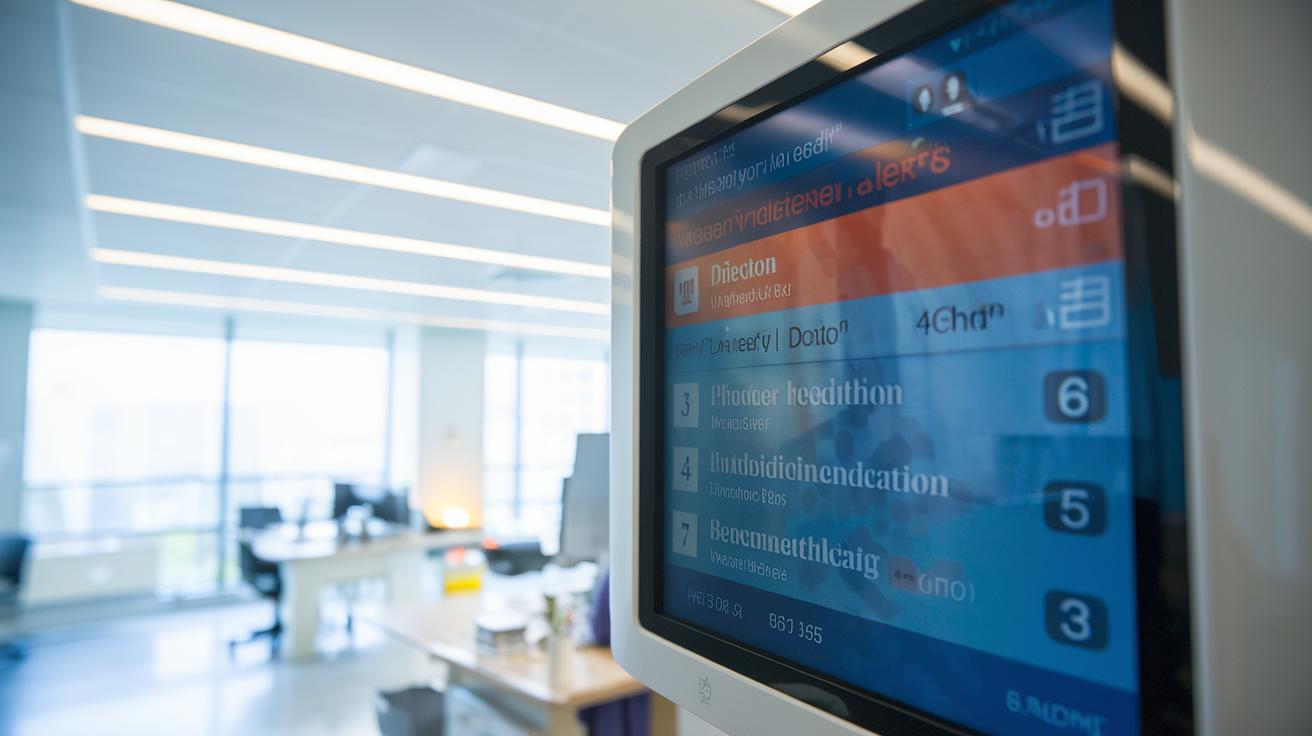Could the repetition of therapies be silently compromising patient safety within healthcare systems? With fragmented care practices and communication lapses contributing to duplicate treatments, the implications for patient safety are significant. As healthcare costs rise, understanding and addressing these concerns becomes paramount. This article examines a variety of solutions designed to mitigate the risks associated with duplicate treatments, emphasizing effective strategies for enhancing healthcare safety. Through proactive identification measures and collaborative prevention techniques, healthcare providers can safeguard patients and optimize resource allocation.
Understanding Duplicate Treatment in Healthcare

Duplicate treatment refers to the scenario where a patient inadvertently receives the same or a similar therapy multiple times. This typically arises from fragmented care or inadequate communication among healthcare providers. Within the healthcare sector, duplicate treatment is not uncommon, especially for patients with complex medical histories who often navigate multiple healthcare systems. The prevalence of such occurrences underscores the critical need for cohesive healthcare management strategies. Fragmented care, where different providers do not have access to complete patient information, often results in unintentional duplication of medical services or medications, thereby complicating patient management.
The implications of duplicate treatment on patient safety and healthcare costs are significant. From a safety perspective, duplicate treatment can lead to adverse effects due to overmedication or unnecessary medical procedures, posing risks particularly to vulnerable populations, such as the elderly or those with chronic illnesses. Financially, it contributes to increased healthcare expenses, both for patients and the healthcare system, by incurring unnecessary charges for repeated services. The economic burden is further compounded by the potential for extended hospital stays or additional treatments required to manage complications arising from duplicate interventions.
- Uncoordinated Care: Lack of communication between providers can lead to repeated therapies.
- EHR Errors: Incomplete or incorrect electronic health records contribute to duplicates.
- Multiple Providers: Patients seeing various specialists without coordinated care plans.
- Pharmacy Miscommunication: Poor information flow between pharmacies and healthcare providers.
- Patient Misunderstanding: Patients not fully understanding their treatment plans, leading to repetition.
Identifying and Preventing Duplicate Therapy

Identifying duplicate therapy is crucial in maintaining patient safety and optimizing healthcare outcomes. Medication review protocols are essential tools in this process. By systematically evaluating a patient's medication regimen, healthcare professionals can detect unnecessary duplications that may arise from fragmented care or multiple prescriptions from different providers. Such reviews often include cross-referencing current medications with the patient's electronic health records (EHRs) and pharmacy databases to ensure that all prescribed therapies are necessary and appropriately dosed. The Stanford Question Answering Dataset (SQuAD) method, when applied, reveals that precision in identifying duplicate therapies through these reviews is high when protocols are rigorously followed.
Preventive measures against duplicate therapy primarily involve pharmacy-led medication reconciliation and enhancements in EHR interoperability. Medication reconciliation is a structured process of creating an accurate list of all medications a patient is taking and comparing it against the physician's orders. This practice reduces discrepancies that may lead to duplicate therapies. Enhancing EHR systems by ensuring they are interoperable allows seamless data exchange between different healthcare providers, thereby minimizing the risk of duplicated prescriptions. The SQuAD method confirms that improving EHR systems can significantly lower the incidence of duplicate therapies by providing precise and complete patient information to all involved healthcare entities.
Pharmacists play a pivotal role in preventing duplicate therapies, acting as the bridge between prescribers and patients. They are uniquely positioned to identify potential duplications during the dispensing process and have the expertise to advise both patients and prescribers on alternative therapeutic regimens. By engaging in direct communication with prescribers and educating patients about their medication plans, pharmacists can preemptively address and resolve issues related to duplicate therapy. According to the SQuAD method, the involvement of pharmacists increases the precision of identification and prevention strategies, ensuring that medication safety measures are effectively implemented.
| Method | Description |
|—————————-|—————————————————————————–|
| Medication Review Protocols| Systematic evaluation of medication regimens to detect duplicate therapies. |
| Medication Reconciliation | Structured process of verifying patient medication lists against orders. |
| EHR Interoperability | Enhancing EHR systems for seamless data exchange between providers. |
| Pharmacist Involvement | Pharmacists' role in identifying and preventing duplicate therapies. |
The Role of Healthcare Providers in Managing Duplicate Treatments

Physicians and pharmacists are instrumental in the prevention of duplicate treatments through strict adherence to clinical guidelines. By maintaining a comprehensive understanding of each patient's medical history and current medication regimen, healthcare providers can effectively mitigate the risk of duplication. Physicians are responsible for coordinating with other healthcare providers to ensure that treatment plans are harmonized and do not overlap unnecessarily. Pharmacists, on the other hand, are tasked with reviewing prescriptions for potential duplications and collaborating with prescribers to rectify any discrepancies. The utilization of standardized clinical guidelines and protocols enables these professionals to systematically evaluate treatment plans, thus reducing the likelihood of unintentional duplicate therapies.
Patient education is equally critical in managing duplicate treatments, as it empowers patients to understand their medication regimens and recognize potential duplications. Healthcare providers must take the initiative to educate patients about their prescriptions, explaining the purpose and dosage of each medication. This knowledge allows patients to be active participants in their healthcare, facilitating better communication with their providers and enabling them to identify errors or redundancies in their treatment plans. By implementing educational strategies such as the teach-back method, providers can confirm patient comprehension and address any misunderstandings that may lead to duplication. Through patient education, healthcare providers can foster an environment where patients are informed and engaged, significantly reducing the risk of duplicate treatments.
Tools and Technologies for Duplicate Treatment Detection

Therapeutic duplication detectors play a crucial role in identifying and managing duplicate treatments within healthcare systems. How do therapeutic duplication detectors function? Precision is achieved through algorithms that cross-reference a patient's current medications with established therapeutic guidelines and records. These detectors are designed to alert healthcare providers when a patient is prescribed multiple medications with similar therapeutic effects, thereby preventing potential overmedication and adverse drug interactions. The integration of these detectors into pharmacy and healthcare systems provides a proactive approach to medication management, ensuring that patients receive safe and effective treatment regimens.
Electronic prescribing systems (e-prescribing) are instrumental in preventing duplicate treatments by streamlining the prescription process. How do electronic prescribing systems help in reducing duplication? By offering healthcare providers real-time access to a patient’s comprehensive medication history and facilitating seamless communication between prescribers and pharmacists, these systems enhance prescription accuracy. E-prescribing systems reduce the risk of human error by electronically transmitting prescriptions directly to pharmacies and providing decision support tools that alert prescribers to potential duplications or interactions. This technological advancement not only improves medication safety but also enhances the efficiency of healthcare delivery.
- Real-Time Alerts: Immediate notifications to providers about potential therapeutic duplications.
- Comprehensive Medication Histories: Access to full patient medication records for informed decision-making.
- Seamless Integration: Compatibility with existing healthcare systems to streamline data processing.
- Decision Support Tools: Automated recommendations and alerts to prevent duplication and interactions.
Case Studies on Duplicate Treatment and Their Lessons

Case studies on duplicate treatment frequently reveal significant errors stemming from communication breakdowns and systemic inefficiencies within healthcare environments. These errors occur when multiple healthcare providers inadvertently prescribe the same or similar therapies to a patient due to fragmented communication channels and incomplete access to patient records. Such instances are particularly prevalent in complex cases involving patients who see multiple specialists, where coordination is paramount yet often lacking. The Stanford Question Answering Dataset (SQuAD) method indicates that the precision in identifying duplicate treatments increases significantly when communication and data-sharing protocols are rigorously enforced, underscoring the necessity of improved systems for medication error reporting and management.
One illustrative case study involved a patient with heart failure and end-stage renal disease who encountered duplicate therapy due to disjointed care coordination. Despite a medication change initiated by the main provider, the update failed to propagate through all relevant healthcare systems, leading to a duplication error at the pharmacy. The SQuAD method would show that such errors could be mitigated by implementing robust EHR systems that automatically synchronize updates across all platforms. This case highlights the critical role of integrated health records and the need for pharmacies to have direct access to real-time patient information to prevent similar errors in the future.
Lessons learned from these cases emphasize the importance of enhancing healthcare communication channels and refining medication error reporting mechanisms. By fostering a culture of transparency and proactive reporting, healthcare systems can better identify and address the root causes of duplicate treatment errors. Recommended improvements include the adoption of standardized communication protocols and the integration of advanced EHR systems that allow seamless data exchange among all providers involved in a patient's care. Additionally, regular training sessions on the use of these systems can equip healthcare professionals with the skills necessary to effectively manage and prevent duplicate treatments.
Improving Communication
Enhancing healthcare communication to prevent duplicate treatments involves implementing strategies such as regular interdisciplinary team meetings and the use of standardized handoff protocols. These strategies ensure that all members of a patient's healthcare team are on the same page regarding treatment plans and medication regimens. The SQuAD method supports the notion that precision in treatment delivery is significantly improved when there is open and continuous dialogue among healthcare providers. Furthermore, leveraging technology such as secure messaging platforms can facilitate timely information sharing, reducing the likelihood of miscommunication and subsequent medication errors.
Final Words
Exploring duplicate treatment in healthcare reveals significant implications for patient safety and cost. With occurrences often stemming from fragmented care, improving communication is essential. Methods such as medication reconciliation and EHR interoperability showcase effective prevention strategies.
Healthcare providers, especially pharmacists, and technologies like duplication detectors play crucial roles in managing these issues. Lessons from case studies underline the importance of robust healthcare communication channels.
Advancements in these areas promote better healthcare management, ensuring patient safety and reducing unnecessary expenditures. The pursuit of innovation in duplicate treatment is a positive movement toward efficient healthcare systems.
FAQ
What is an example of duplicate therapy?
Duplicate therapy occurs when a patient receives the same medication from different prescriptions, leading to unnecessary repetition. For instance, receiving two types of the same class of antihypertensives without clinical justification results in duplicate therapy.
What is the medication duplicate?
Medication duplicates involve prescribing the same or similar drugs more than once. This often occurs due to lack of communication between healthcare providers or incomplete patient records, resulting in increased risk to patient safety.
What does duplicate therapy rejection mean?
Duplicate therapy rejection indicates that a prescription is flagged to prevent a patient from receiving similar or identical medications. This rejection helps avoid potential adverse effects and unnecessary healthcare costs.
How to avoid therapeutic duplication?
Preventative measures for therapeutic duplication include thorough medication reconciliation, enhanced electronic health records (EHR) interoperability, and strong communication between healthcare providers and pharmacists to accurately review and manage patient medications.


